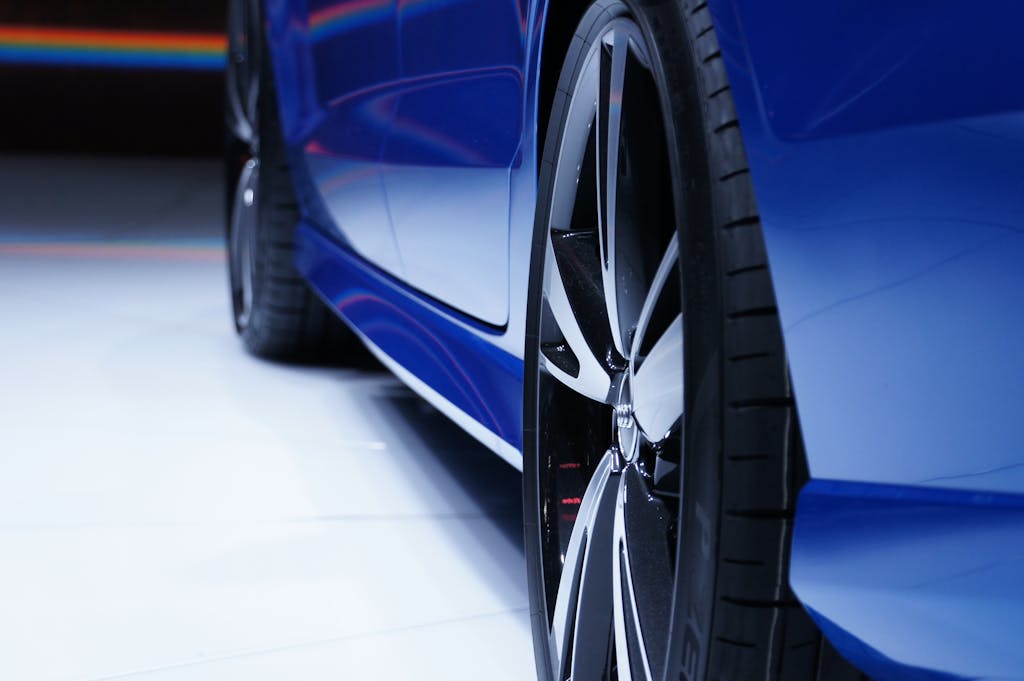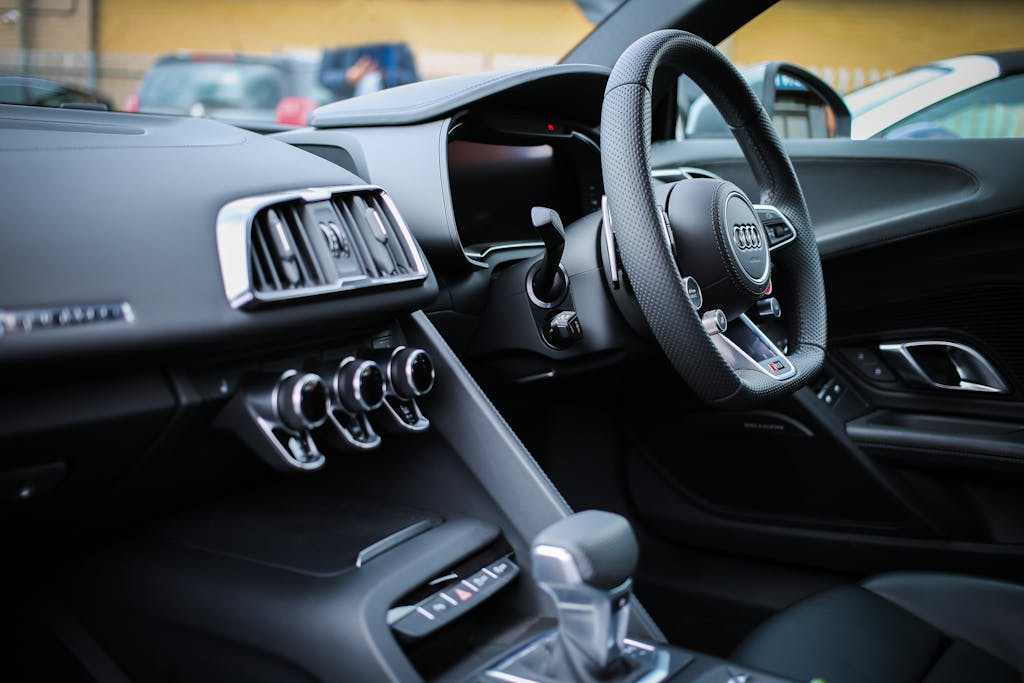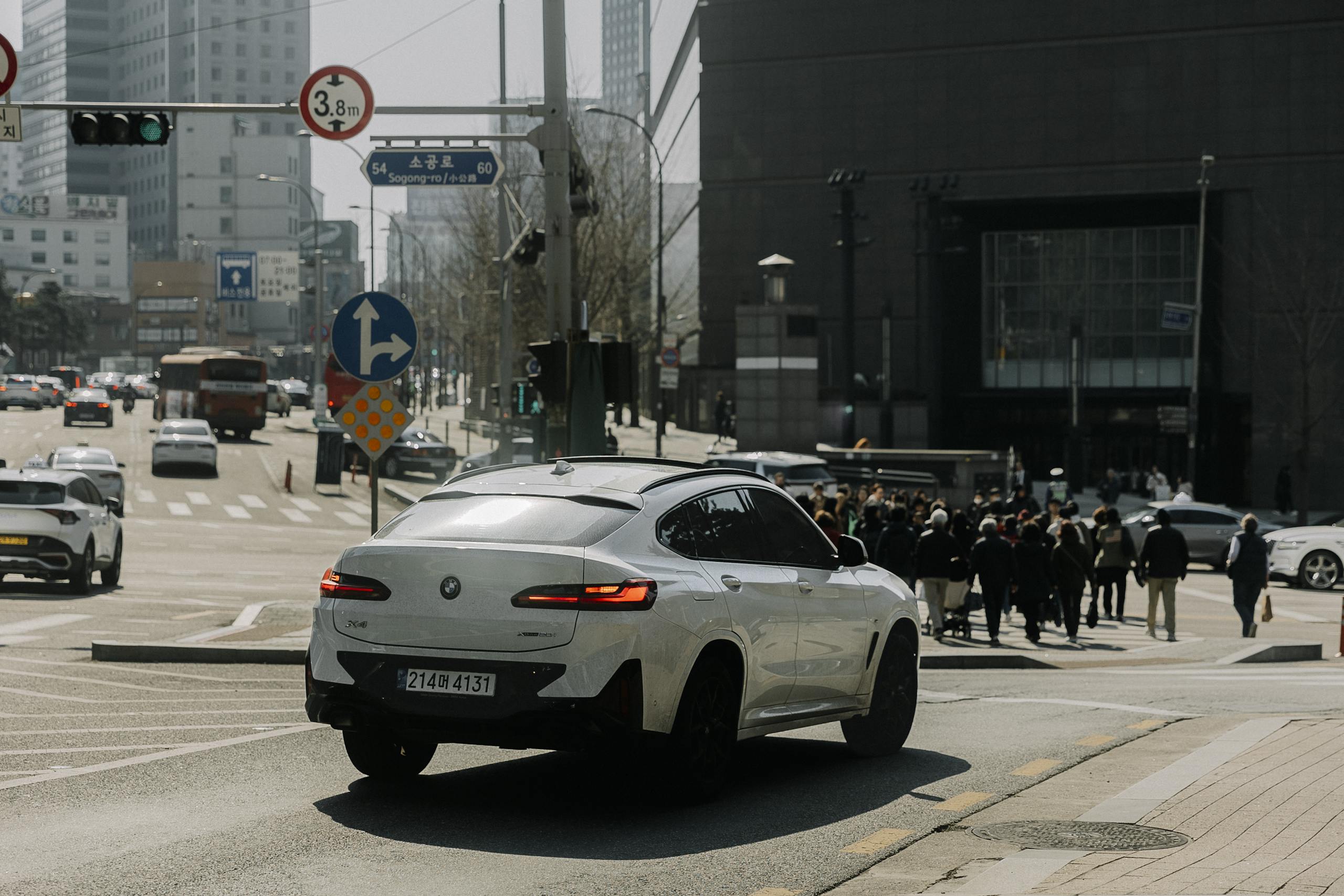What will you do inside an autonomous vehicle?
What will you do inside an autonomous vehicle? The future of mobility is coming into view
Manufacturers from Japan and beyond showcased the newest innovations at the Japan Mobility Show, which ran through the 5th, with the theme “Future Mobility.” In the near future, we can see what “free mobility” will look like. (Wakai Takumi)The guests were drawn to the car’s copper-coloured light on the dimly illuminated stage because of its smooth outside design that allows you to feel the air flowing and its LED-covered cabin, which occasionally changes the scenery.The four-seater luxury minivan Nissan Motor introduced as their next-generation concept vehicle is called the Hyperstar. It is operated by an artificially intelligent (AI) fully autonomous car.

The driver’s seat has a 360-degree rotation feature that enables passengers to face the back seat. Now, that time spent driving may be used for business meetings or just lounging and having fun. President Uchida Makoto compared traveling to being in your home room during a press conference on the 25th that was previewed for the media.
Around the world, autonomous driving technology—which permits individuals to travel freely without requiring a driver’s license—is being developed and made legal because it is thought to be helpful in lowering traffic accidents and addressing the driver shortage. A car may now be operated on public highways in Japan at Level 4, where the autonomous driving system “drives” the vehicle under specific circumstances, such as in defined portions, thanks to revisions made to the Road Traffic Act in April of this year.However, a major automaker claims that currently, the costs and legal restrictions make it “prohibitive” to equip private cars with completely autonomous driving technology. It is getting closer to being used in actual public transportation, like route buses and taxis.
The Cruise Origin, which Honda unveiled for the first time, has Level 4 technology. The four corners of the automobile are equipped with radars and other sensors to keep an eye on the environment. When the car reaches its destination, it picks up passengers automatically at predetermined spots. The six-seater has a large interior with seats facing one another rather than a driver’s seat.
Driverless taxis to start in city centers
In Tokyo, Honda intends to utilize this car for driverless taxis starting in 2026. Initially, the city center will see the deployment of several dozen vehicles, followed by a steady expansion of both the number and area of vehicles.
In order to meet the growing demand from tourists traveling to Japan, the company intends to launch the service in populated areas.Conversely, Honda anticipates that autonomous driving will work well as a mode of transportation in rural areas with limited access to public transportation. Development of the two-seater “CI-MEV” is presently underway
.A little vehicle shaped like a rice ball has eight cameras attached to it to assess the surrounding conditions. To keep expenses down and allow for a low-cost build, the vehicle body is as tiny as possible.

“Mobility Show” featuring future vehicles and EVs is exploring what it should look like
The Tokyo Motor Show will now be known as the Japan Mobility Show (JMS), and it will open at the Big Sight in Ariake, Tokyo, on the 26th. With the decline of the domestic auto industry, the program aims to become a venue that celebrates mobility in all its forms and doesn’t just focus on automobiles.”In keeping with the evolution from a motor show to JMS, we will exhibit Honda’s vision of the present and future of mobility,” stated Honda President Toshihiro Mibe at a press preview on the 25th.The Cruise Origin, a car that will function as an autonomous taxi in 2026, and the UniOne, a compact mobility vehicle resembling a chair, were displayed on stage.
Along with electric vehicles, Subaru also showcased a “Air Mobility Concept” that is capable of flying (EVs). “Motor shows around the world are gradually becoming more and more dreary,” stated President Atsushi Osaki. The mobility show has a huge impact on bringing Japan to life.”Automakers only attend motor shows in China, the largest market in the world, as a result of corporations diversifying their communication channels, such as social media. The expansion of EVs, which foreign automakers are concentrating on, is still just roughly 2% of new car sales, making them less appealing as the local market is contracting.
Autonomous Vehicles in 2024: Evolving Technology and Future Outlook
The field of driverless cars is still developing daily. The impact of autonomous driving technology on our lives has changed as of 2024. This essay will mostly address current developments in autonomous vehicles as well as its potential for the future.
We will give a clear explanation of the fundamentals of self-driving cars in this post, along with an update on current developments and potential applications. Let’s examine the changes in our automotive society and expand our understanding about self-driving cars.
What is a self-driving car?: A basic introduction
A car that can drive itself without assistance from a human is called an autonomous vehicle. Thanks to this technology, the car can now perceive, assess, and navigate its surroundings without the need for a human driver. Many advantages are anticipated from the development of autonomous vehicles, such as a decrease in traffic accidents, a reduction in traffic congestion, and an increase in mobility.
The integration of cutting-edge technologies including sensors, cameras, radar, and artificial intelligence (AI) enables autonomous driving technology. With the aid of these technologies, automobiles can now securely navigate traffic lanes and comprehend their immediate surroundings. To ensure efficient travel, autonomous cars also choose the best path based on the weather and traffic.
Understanding Autonomous Driving Levels: A Classification from 0 to 5
Depending on how far along it has come, autonomous driving technology is divided into six levels, ranging from level 0 to level 5. Driving at Level 0 involves just human controls; autonomous driving technology is not used in any way. Driving assistance and partial driving automation are referred to as Levels 1 and 2, respectively. While some driving activities are automated, the driver retains most control over the vehicle.
Level 4 is high driving automation, where the system can drive without driver intervention under certain conditions but not always. Level 3 is conditional driving automation, where the system only handles all driving operations under specific conditions; the driver must intervene if necessary.
Level 5, the ultimate goal, is total automation, meaning that the vehicle can operate without the driver’s assistance in any situation. This stage of development is regarded as the pinnacle of autonomous driving technology and is anticipated to significantly alter both the social structure and the mode of transportation. In order to achieve Level 5, numerous automakers and IT firms are now working on research and development projects.

Level 1 and Level 2: Evolution in Production Vehicles
In contemporary commercial cars, Level 1 and Level 2 autonomous driving systems are commonly used. Level 1 automates some of the steering, braking, and accelerator tasks and offers rudimentary driving assistance. This includes features like lane keep assist and adaptive cruise control. These features lessen driver tiredness while enhancing driving safety.
Level 2 sees the development of these features and the vehicle’s ability to manage increasingly challenging driving scenarios. Level 2 automation allows the car to operate in both longitudinal and lateral directions at the same time. For instance, it may autonomously maintain its lane on a highway. But at this point, the driver has to keep a close eye on the driving conditions and take appropriate action if needed.
Technologies at Levels 1 and 2 are crucial stages in the development of autonomous driving. These innovations help to increase comfort while driving in addition to safety. It is anticipated that these technologies will advance further in the future, offering a more pleasant and safe driving environment.
Level 4: Driverless reality
Under some circumstances and settings, cars can operate entirely independently without the need for driver assistance, a capability known as level 4 autonomous driving. At this point, the car can operate entirely on its own in specific areas, on specific routes, and in specific types of weather. Only a limited set of Operational Design Domains (ODDs) are suitable for driverless operation of Level 4 autonomous vehicles.
Transportation networks could be completely transformed by level 4 technology, particularly in metropolitan regions. It could be utilized, for instance, as an autonomous shuttle or taxi service, which is anticipated to increase accessibility to public transportation, lessen traffic, and increase traffic efficiency. Individuals with impairments and the elderly have a lot of potential uses for level 4 autonomous vehicles.
Integration of cutting-edge sensor, artificial intelligence, and communication technologies is necessary to reach Level 4. Other crucial concerns are creating a legal framework and guaranteeing safety. It is anticipated that the widespread deployment of Level 4 autonomous cars would open up new commercial opportunities and have the ability to drastically alter the urban traffic situation.
The challenge to Level 5: the dream of fully autonomous driving
At level 5, fully autonomous driving in any situation is realized, which is the ultimate goal of autonomous driving technology. At this point, the car can operate securely on any route and in all weather without the need for human involvement from the driver. The potential for Level 5 autonomous cars to drastically alter the current transportation infrastructure exists.
Reaching Level 5 entails significant social and technical obstacles. In order to handle intricate traffic circumstances and unforeseen obstructions, vehicles must possess sophisticated decision-making and adaptive capabilities. Before this level of driverless vehicles is extensively used, legal and social acceptance issues also need to be addressed.
Manufacturers from Japan and beyond showcased the newest innovations at the Japan Mobility Show, which ran through the 5th, with the theme “Future Mobility.” In the near future, we can see what “free mobility” will look like. (Wakai Takumi)The guests were drawn to the car’s copper-coloured light on the dimly illuminated stage because of its smooth outside design that allows you to feel the air flowing and its LED-covered cabin, which occasionally changes the scenery.The four-seater luxury minivan Nissan Motor introduced as their next-generation concept vehicle is called the Hyperstar. It is operated by an artificially intelligent (AI) fully autonomous car.
The driver’s seat has a 360-degree rotation feature that enables passengers to face the back seat. Now, that time spent driving may be used for business meetings or just lounging and having fun. President Uchida Makoto compared traveling to being in your home room during a press conference on the 25th that was previewed for the media.
Around the world, autonomous driving technology—which permits individuals to travel freely without requiring a driver’s license—is being developed and made legal because it is thought to be helpful in lowering traffic accidents and addressing the driver shortage. A car may now be operated on public highways in Japan at Level 4, where the autonomous driving system “drives” the vehicle under specific circumstances, such as in defined portions, thanks to revisions made to the Road Traffic Act in April of this year.However, a major automaker claims that currently, the costs and legal restrictions make it “prohibitive” to equip private cars with completely autonomous driving technology. It is getting closer to being used in actual public transportation, like route buses and taxis.
The Cruise Origin, which Honda unveiled for the first time, has Level 4 technology. The four corners of the automobile are equipped with radars and other sensors to keep an eye on the environment. When the car reaches its destination, it picks up passengers automatically at predetermined spots. The six-seater has a large interior with seats facing one another rather than a driver’s seat.

Driverless taxis to start in city centers
In Tokyo, Honda intends to utilize this car for driverless taxis starting in 2026. Initially, the city center will see the deployment of several dozen vehicles, followed by a steady expansion of both the number and area of vehicles.
In order to meet the growing demand from tourists traveling to Japan, the company intends to launch the service in populated areas.Conversely, Honda anticipates that autonomous driving will work well as a mode of transportation in rural areas with limited access to public transportation. Development of the two-seater “CI-MEV” is presently underway
.A little vehicle shaped like a rice ball has eight cameras attached to it to assess the surrounding conditions. To keep expenses down and allow for a low-cost build, the vehicle body is as tiny as possible.
“Mobility Show” featuring future vehicles and EVs is exploring what it should look like
The Tokyo Motor Show will now be known as the Japan Mobility Show (JMS), and it will open at the Big Sight in Ariake, Tokyo, on the 26th. With the decline of the domestic auto industry, the program aims to become a venue that celebrates mobility in all its forms and doesn’t just focus on automobiles.”In keeping with the evolution from a motor show to JMS, we will exhibit Honda’s vision of the present and future of mobility,” stated Honda President Toshihiro Mibe at a press preview on the 25th.The Cruise Origin, a car that will function as an autonomous taxi in 2026, and the UniOne, a compact mobility vehicle resembling a chair, were displayed on stage.
Along with electric vehicles, Subaru also showcased a “Air Mobility Concept” that is capable of flying (EVs). “Motor shows around the world are gradually becoming more and more dreary,” stated President Atsushi Osaki. The mobility show has a huge impact on bringing Japan to life.”Automakers only attend motor shows in China, the largest market in the world, as a result of corporations diversifying their communication channels, such as social media. The expansion of EVs, which foreign automakers are concentrating on, is still just roughly 2% of new car sales, making them less appealing as the local market is contracting.
Autonomous Vehicles in 2024: Evolving Technology and Future Outlook
The field of driverless cars is still developing daily. The impact of autonomous driving technology on our lives has changed as of 2024. This essay will mostly address current developments in autonomous vehicles as well as its potential for the future.
We will give a clear explanation of the fundamentals of self-driving cars in this post, along with an update on current developments and potential applications. Let’s examine the changes in our automotive society and expand our understanding about self-driving cars.
What is a self-driving car?: A basic introduction
A car that can drive itself without assistance from a human is called an autonomous vehicle. Thanks to this technology, the car can now perceive, assess, and navigate its surroundings without the need for a human driver. Many advantages are anticipated from the development of autonomous vehicles, such as a decrease in traffic accidents, a reduction in traffic congestion, and an increase in mobility.
The integration of cutting-edge technologies including sensors, cameras, radar, and artificial intelligence (AI) enables autonomous driving technology. With the aid of these technologies, automobiles can now securely navigate traffic lanes and comprehend their immediate surroundings. To ensure efficient travel, autonomous cars also choose the best path based on the weather and traffic.
Understanding Autonomous Driving Levels: A Classification from 0 to 5
Depending on how far along it has come, autonomous driving technology is divided into six levels, ranging from level 0 to level 5. Driving at Level 0 involves just human controls; autonomous driving technology is not used in any way. Driving assistance and partial driving automation are referred to as Levels 1 and 2, respectively. While some driving activities are automated, the driver retains most control over the vehicle.
Level 4 is high driving automation, where the system can drive without driver intervention under certain conditions but not always. Level 3 is conditional driving automation, where the system only handles all driving operations under specific conditions; the driver must intervene if necessary.
Level 5, the ultimate goal, is total automation, meaning that the vehicle can operate without the driver’s assistance in any situation. This stage of development is regarded as the pinnacle of autonomous driving technology and is anticipated to significantly alter both the social structure and the mode of transportation. In order to achieve Level 5, numerous automakers and IT firms are now working on research and development projects.
Level 1 and Level 2: Evolution in Production Vehicles
In contemporary commercial cars, Level 1 and Level 2 autonomous driving systems are commonly used. Level 1 automates some of the steering, braking, and accelerator tasks and offers rudimentary driving assistance. This includes features like lane keep assist and adaptive cruise control. These features lessen driver tiredness while enhancing driving safety.
Level 2 sees the development of these features and the vehicle’s ability to manage increasingly challenging driving scenarios. Level 2 automation allows the car to operate in both longitudinal and lateral directions at the same time. For instance, it may autonomously maintain its lane on a highway. But at this point, the driver has to keep a close eye on the driving conditions and take appropriate action if needed.
Technologies at Levels 1 and 2 are crucial stages in the development of autonomous driving. These innovations help to increase comfort while driving in addition to safety. It is anticipated that these technologies will advance further in the future, offering a more pleasant and safe driving environment.
Level 4: Driverless reality
Under some circumstances and settings, cars can operate entirely independently without the need for driver assistance, a capability known as level 4 autonomous driving. At this point, the car can operate entirely on its own in specific areas, on specific routes, and in specific types of weather. Only a limited set of Operational Design Domains (ODDs) are suitable for driverless operation of Level 4 autonomous vehicles.
Transportation networks could be completely transformed by level 4 technology, particularly in metropolitan regions. It could be utilized, for instance, as an autonomous shuttle or taxi service, which is anticipated to increase accessibility to public transportation, lessen traffic, and increase traffic efficiency. Individuals with impairments and the elderly have a lot of potential uses for level 4 autonomous vehicles.
Integration of cutting-edge sensor, artificial intelligence, and communication technologies is necessary to reach Level 4. Other crucial concerns are creating a legal framework and guaranteeing safety. It is anticipated that the widespread deployment of Level 4 autonomous cars would open up new commercial opportunities and have the ability to drastically alter the urban traffic situation.
The challenge to Level 5: the dream of fully autonomous driving
At level 5, fully autonomous driving in any situation is realized, which is the ultimate goal of autonomous driving technology. At this point, the car can operate securely on any route and in all weather without the need for human involvement from the driver. The potential for Level 5 autonomous cars to drastically alter the current transportation infrastructure exists.
Reaching Level 5 entails significant social and technical obstacles. In order to handle intricate traffic circumstances and unforeseen obstructions, vehicles must possess sophisticated decision-making and adaptive capabilities. Before this level of driverless vehicles is extensively used, legal and social acceptance issues also need to be addressed.







